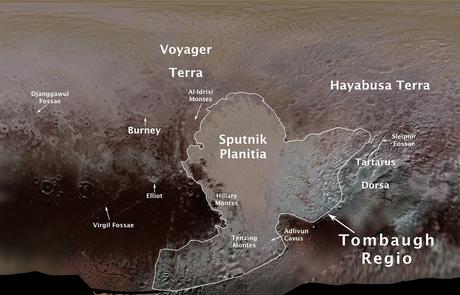 It has been more than 60 years since Edmund Hillary and Tenzing Norgay first reached the summit of Mt. Everest, and yet even today they are still being remembered for that historical feat. The latest honor came earlier this week when the International Astronomical Union announced the names of some prominent features that were recently discovered on the dwarf planet Pluto. These geological formations were first identified by the New Horizon spacecraft back in July of 2015, but as scientists have sifted through the data collected during that mission, they have begun to give names to the more impressive features.
It has been more than 60 years since Edmund Hillary and Tenzing Norgay first reached the summit of Mt. Everest, and yet even today they are still being remembered for that historical feat. The latest honor came earlier this week when the International Astronomical Union announced the names of some prominent features that were recently discovered on the dwarf planet Pluto. These geological formations were first identified by the New Horizon spacecraft back in July of 2015, but as scientists have sifted through the data collected during that mission, they have begun to give names to the more impressive features.Since Pluto was originally named for the god of the underworld, many of the names given to these newly discovered formations offer similar monikers. For instance, one of the locations on the new map of Pluto's surface bears the name Sleipnir Fossa for the eight-legged horse that Odin rode into the underworld in Norse mythology. Similarly, Virgil Fossae has been named in honor of Dante's guide through hell and purgatory in the Divine Comedy. Other locations received names that honored Sputnik 1, the first manmade satellite, as well as Clyde Tombaugh, the American astronomer who first identified Pluto back in 1930.
But, also mixed in with those mythological and scientific names were those of Hillary and Norgay as well. Tenzing Montes and Hillary Montes are now two mountain ranges located on the surface of Pluto, each of which is obviously named for its respective mountaineer.
The two climbers had numerous awards and untold adulation heaped upon them while they were alive, but I'd venture to guess that neither of them ever thought that a mountain range on another planet would be named after them. In the mountaineering world they are already towering giants who cast a long shadow over climbing history. Now, they'll do the same on the surface of the most distant planet in our solar system.

